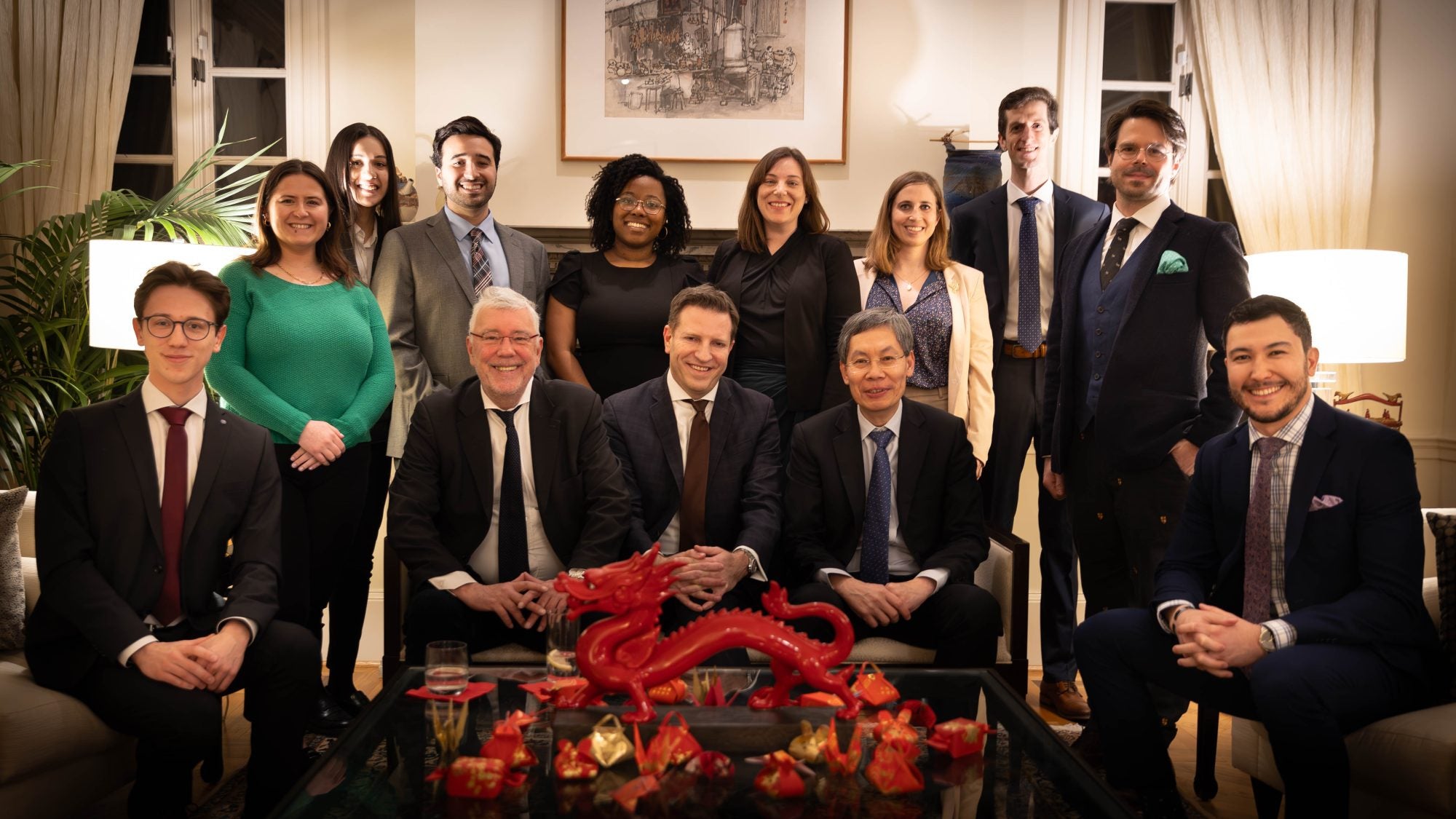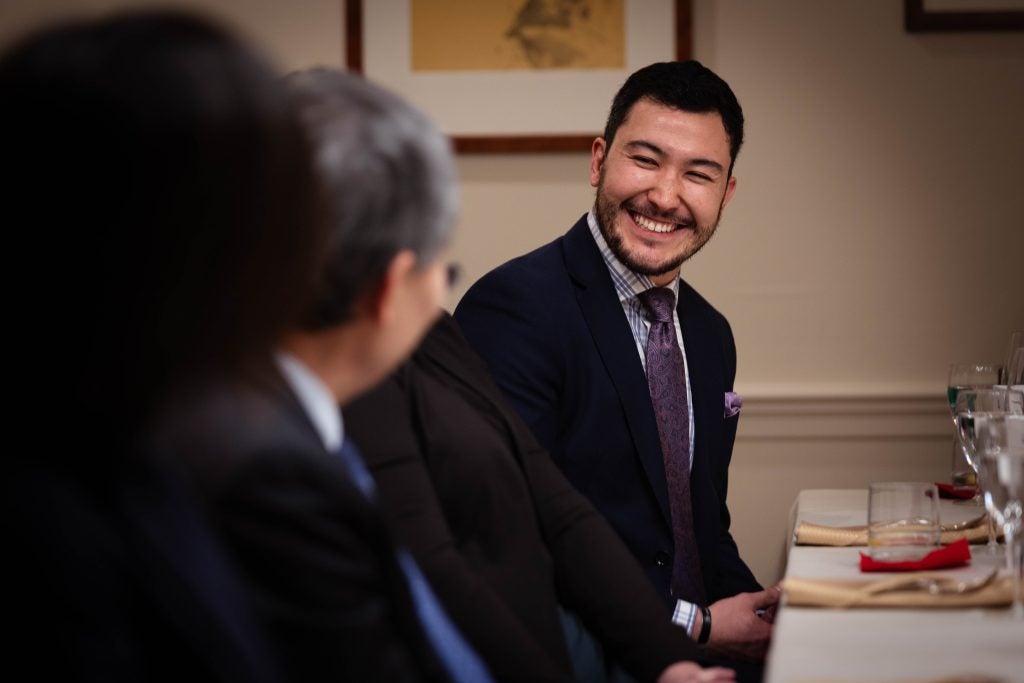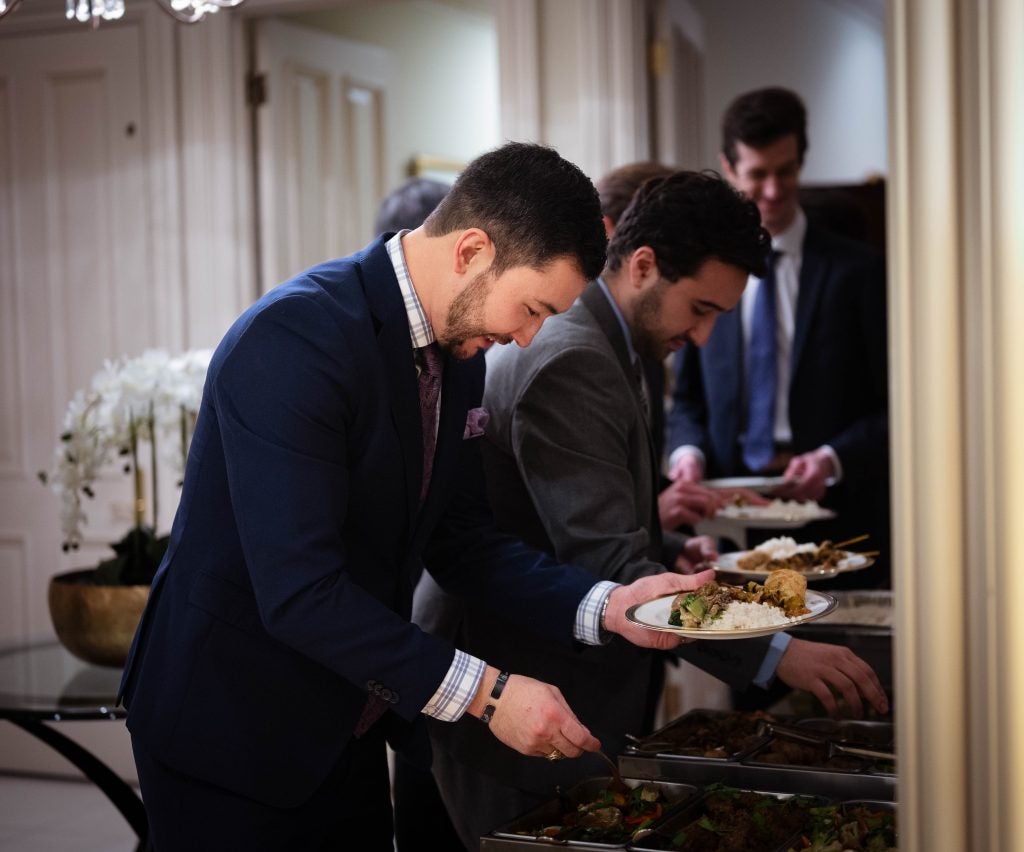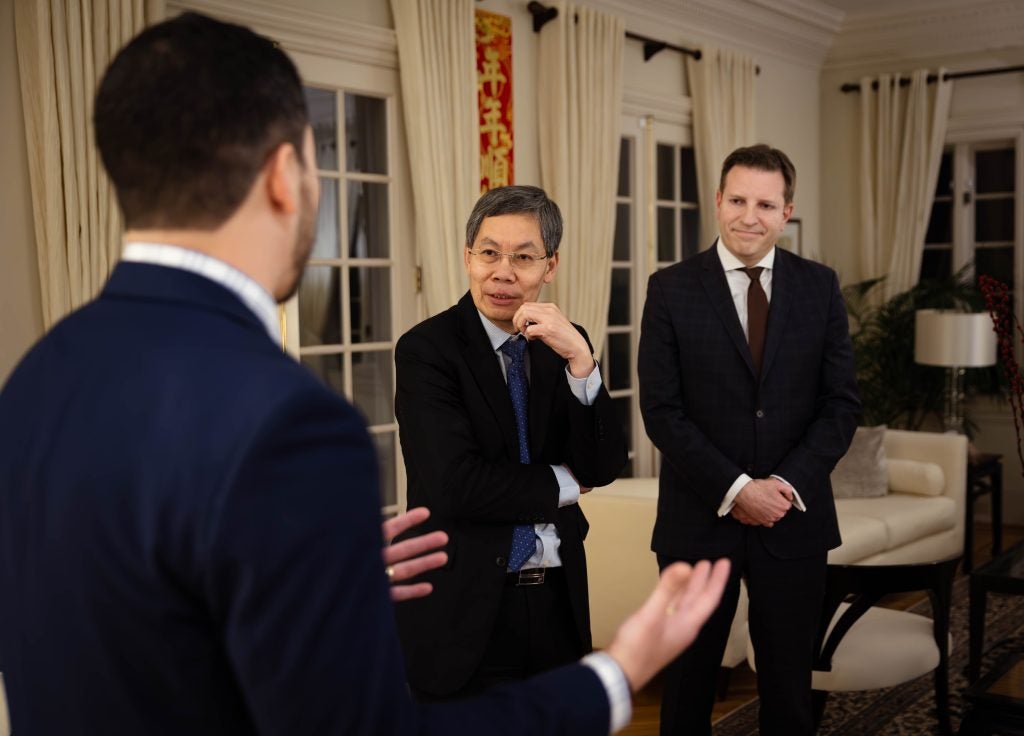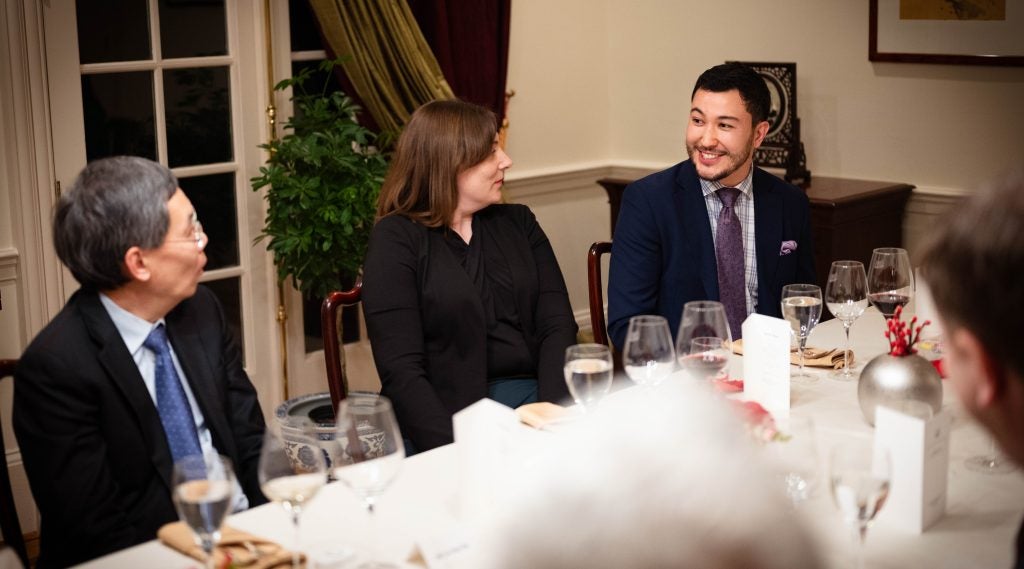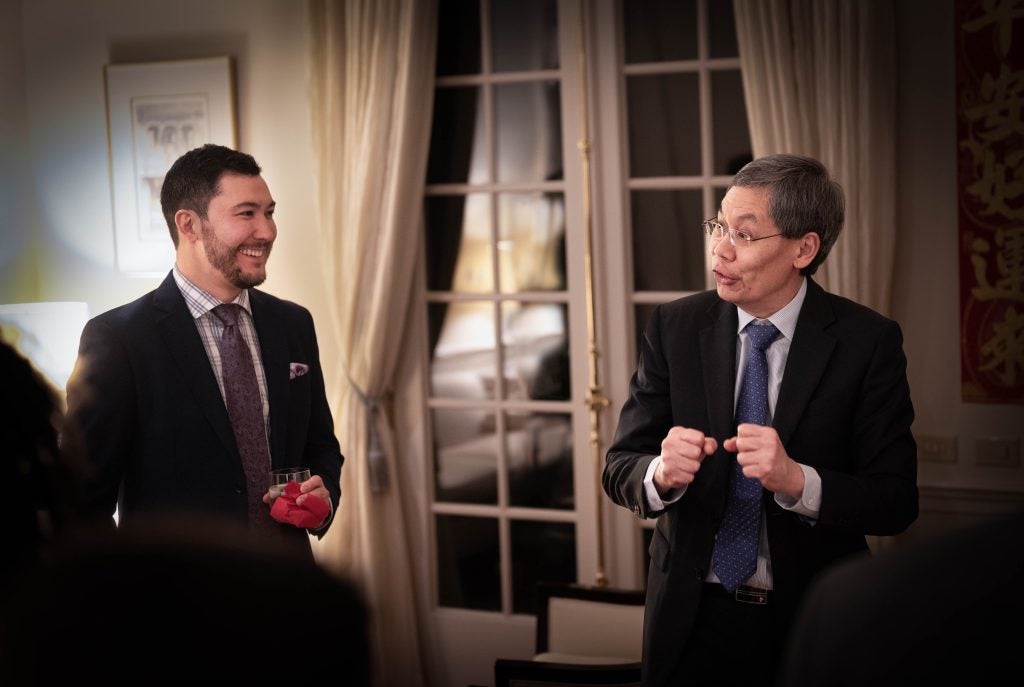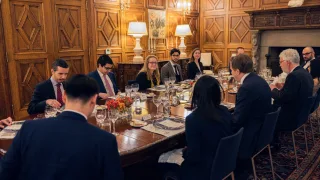Step into Washington, DC’s, Kalorama neighborhood, and amidst the stately homes, a beacon of Franco-American solidarity shines. A miniature Statue of Liberty, once a Parisian landmark, now stands proudly draped in the Ukrainian flag. As you approach the residence, built in 1910 by a French-born American architect, its beauty unfolds before you. Stepping inside, the scent of French wine mingles with the murmur of conversation as you’re offered hors d’oeuvres. But the real treat awaits — a tour led by the ambassador himself, navigating a gallery of portraits featuring legendary figures like Marquis de La Fayette. This wasn’t just an average dinner party — it was a history lesson served on a silver platter by French Ambassador Laurent Bili who was about to become our guide through the intricacies of international relations, one bite and historical anecdote at a time.
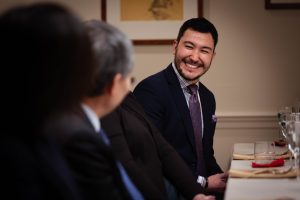
For me, it was another session of class in the Art of Diplomacy.
This unique course, co-taught by Professor Mark Vlasic and Belgian Ambassador Jean Arthur Regibeau, explores diplomacy over intimate dinners with ambassadors in Washington, DC. I aimed to gain firsthand insights into the intricacies of “backstage diplomacy,” conflict resolution, cultural understanding and the daily work and challenges faced by ambassadors in navigating international relations.
My interest in the course came from having spent many years of my adult life on military missions with major diplomatic implications overseas in countries such as Afghanistan, Indonesia, Thailand and Norway. On these deployments and missions, I have been fortunate to learn the importance of relationship-building over a meal or outside a formal meeting. Learning about different cultures and engaging in dialogue to learn about people — their experiences, what motivates them, how they think — has been a core passion of mine since before I can remember.
The chance to learn from seasoned ambassadors, alongside talented professors and diverse classmates in the Art of Diplomacy course was an opportunity I couldn’t miss. In my upcoming role at the Pentagon, this class seemed like the perfect tool to enhance my understanding of U.S. relations with the nations we engage with.
Nerves and Etiquette: A Learning Curve
While these dinners seemed undeniably nerve-wracking at first, wining and dining with some of the most important diplomatic officials in the world, our professors put us at ease during our first dinner which Ambassador Regibeau, one of the professors of the course, hosted at his residence as a sort of practice run. Together, Professor Vlasic and the ambassador offered guidance on navigating conversation etiquette and striking a balance between policy-driven questions and those that delve deeper into the “how” of their work.
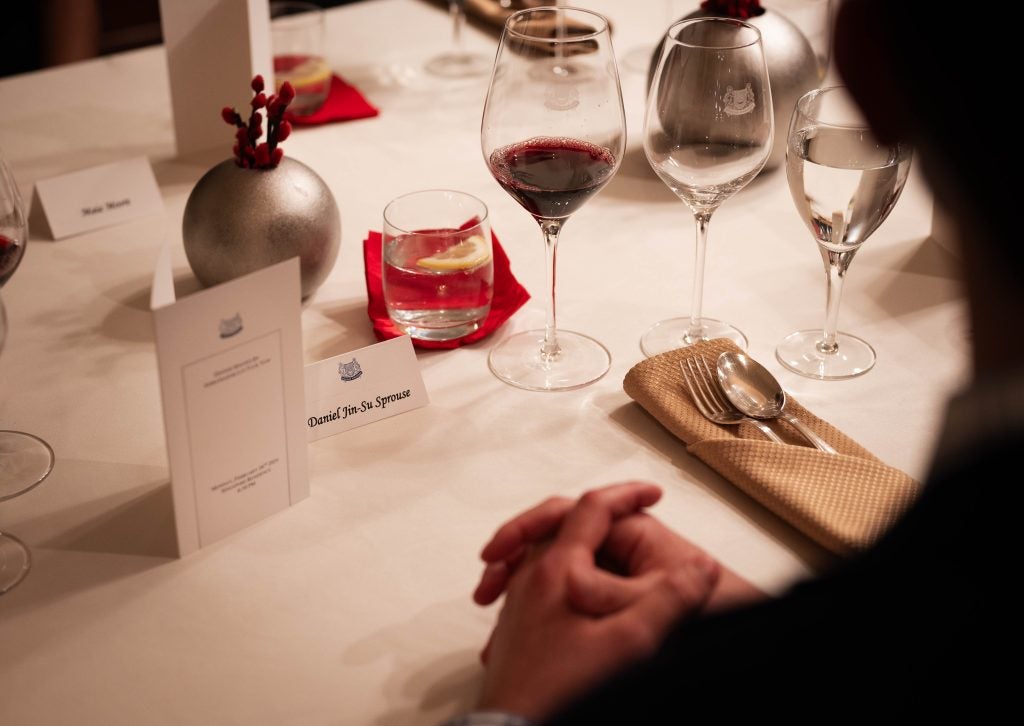
While a grasp of international relations is likely a given for this course, our education extended well beyond policy discussions. Each embassy dinner served as a masterclass in cultural etiquette. Navigating these unspoken rules was an eye-opening experience. One classmate also pointed out the fascinating French custom of keeping your hands on the table during meals — a historical tradition signifying the absence of weapons. Addressing the Ambassadors as “Your Excellency” and expressing gratitude through handwritten thank-you notes were essential aspects of demonstrating respect in each cultural context. These dinners proved that diplomacy is as much about building rapport through proper etiquette as it is about the words exchanged at the table.
The diverse backgrounds and experiences of my fellow students also play a crucial role. Through a dedicated class group chat, we share insights about the countries and ambassadors we will meet, ensuring we come prepared for meaningful discussions. Beyond individual preparation, we gather before each dinner to brainstorm questions collectively, ensuring engaging conversations once inside.
Beyond the Books: Ambassadors as Teachers
While our course has been rooted in ideas from American statesmen such as Henry Kissinger and Robert Zoellick, our most valuable lessons have come directly from the ambassadors themselves. This semester, we’ve so far visited the residences of ambassadors from Belgium, France, Switzerland, Thailand and Singapore. Each ambassador’s unique background, shaped by diverse experiences in military, public and diplomatic service, informs their approach to their role.
Many ambassadors view their duties as extending beyond simply representing their nation’s interests. They actively engage with the diaspora in the United States. Thai Ambassador Tanee Sanger, for example, embraces “culinary diplomacy” by actively participating in the Thai Restaurant Association of America, and even offers his personal phone number to local Thai people for support. Meanwhile, other ambassadors emphasize the importance of embracing their host countries. This was a lesson I learned from Swiss Ambassador Jacques Pitteloud, who displayed an impressive knowledge of U.S. Civil War history.
